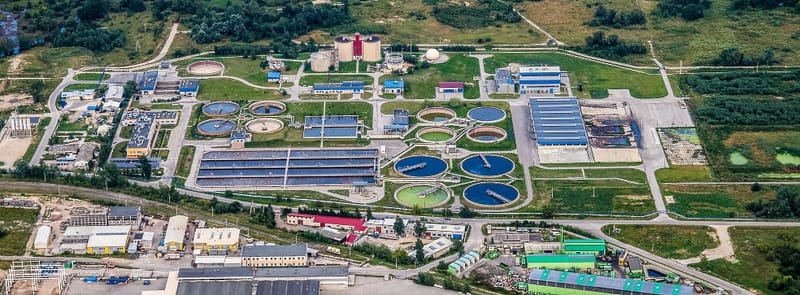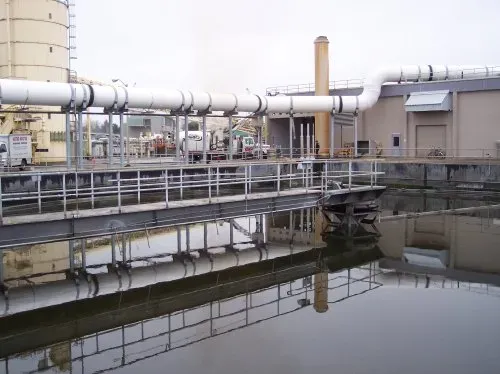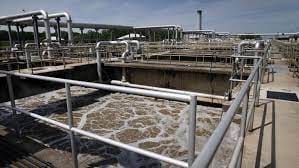Innovations and Advances in Wastewater Treatment - Ahead of Times
Introduction
In the pursuit of sustainable urban growth, wastewater treatment stands as a vital frontier. The demand for adequate wastewater management rises in tandem with city expansion and population growth. Thankfully, technological developments are opening the door to creative ideas that could completely transform how urban wastewater is treated. These innovative technologies, which range from ultrasonic reactors to advanced oxidation, are changing wastewater treatment and opening up new possibilities for environmental stewardship and sustainability. To reach their full potential, these advances do, however, come with special hurdles that need to be overcome. Staying ahead of new opportunities and difficulties in wastewater treatment also requires investigating future directions.

Challenges in Implementation
1. Cost Considerations: While innovative technologies hold promise for enhanced wastewater treatment, their upfront costs can be prohibitive for many municipalities and wastewater treatment facilities. Balancing the initial investment with long-term benefits remains a significant challenge in the adoption of these technologies.
2. Infrastructure Limitations: Retrofitting existing wastewater treatment infrastructure to accommodate advanced technologies can pose logistical challenges. Limited space, outdated equipment, and infrastructure constraints may necessitate significant modifications or upgrades, adding complexity and cost to implementation efforts.
3. Technical Expertise Requirements: Implementing and operating advanced treatment technologies often require specialized technical expertise. Training and retaining skilled personnel capable of effectively managing and maintaining these systems present ongoing challenges for wastewater treatment facilities.
4. Regulatory Compliance: Meeting stringent regulatory standards for wastewater discharge remains a paramount concern for municipalities and industries. While advanced technologies offer improved treatment efficacy, ensuring compliance with evolving regulatory requirements poses a continuous challenge, requiring ongoing monitoring and adaptation.
5. Energy Consumption: Some advanced treatment technologies, such as ultrasonic reactors and reverse osmosis, may require significant energy inputs to operate effectively. Balancing the energy demands of treatment processes with environmental sustainability objectives presents a complex challenge, particularly in regions where energy resources are limited or costly.
6. Public Perception and Acceptance: Introducing new wastewater treatment technologies may face resistance from the public due to concerns about safety, efficacy, and aesthetic impacts. Overcoming skepticism and fostering community acceptance through transparent communication and public engagement efforts is crucial for successful implementation.
7. Scaling and Integration: Scaling up innovative technologies from laboratory or pilot-scale demonstrations to full-scale implementation poses technical and logistical challenges. Ensuring seamless integration with existing treatment processes and infrastructure while maintaining performance and reliability requires careful planning and coordination.

Advanced Oxidation: Breaking Down Boundaries
One of the most promising developments in wastewater treatment is the application of advanced oxidation processes (AOPs). Through the use of chemical reagents or free radicals, AOPs target persistent organic contaminants that pose challenges to conventional treatment methods. By breaking down these compounds at a molecular level, advanced oxidation offers a powerful tool for managing wastewater quality and safeguarding environmental health.
Reverse osmosis and ultrafiltration: Cleaning Up the Future
Reverse osmosis and ultrafiltration have become essential tools in the search for clean water. These techniques efficiently remove impurities from water by exposing it to high-pressure membrane processes, producing water that satisfies strict quality requirements. The resultant cleaned water can subsequently be used for a variety of purposes, from industrial operations to agricultural irrigation, supporting the sustainability of resources and aiding in water conservation efforts.
Photocatalytic Oxidation: Harnessing the Power of Light
Photocatalytic oxidation represents a novel approach to wastewater treatment, leveraging the catalytic properties of materials like titanium dioxide and the energy of ultraviolet (UV) light. By activating these catalysts, photocatalytic oxidation generates free radicals that oxidize and degrade organic contaminants and microorganisms present in wastewater. This technology holds promise for addressing emerging pollutants and microbiological concerns, offering a pathway to cleaner and safer water supplies.
Ultrasonic Reactors: Shaping the Future of Treatment
Ultrasonic reactors harness the power of high-frequency ultrasonic waves to transform wastewater treatment. By creating microbubbles that collapse violently, ultrasonic reactors generate intense heat and pressure, effectively disintegrating contaminants and microorganisms. This innovative technology represents a leap forward in the quest for more efficient and sustainable wastewater treatment solutions, offering enhanced decontamination and purification capabilities.
Naturally or Genetically Enhanced Microorganisms: Nature's Allies
In the realm of biological treatment, naturally or genetically enhanced microorganisms are playing a pivotal role in wastewater remediation. By harnessing the natural capabilities of microorganisms or engineering them for enhanced performance, this approach offers a targeted and sustainable solution for treating refractory contaminants. Through careful selection and optimization, microorganisms can be tailored to specific treatment needs, unlocking new possibilities for wastewater treatment efficiency and effectiveness.
Electrocoagulation and Electrooxidation: Powering Progress
Electrocoagulation and electrooxidation represent a fusion of electrical and chemical processes to tackle wastewater pollutants. By applying electric current, these methods induce coagulation and oxidation reactions, facilitating the removal of contaminants from wastewater streams. This innovative approach offers a versatile and environmentally friendly solution for wastewater treatment, with potential applications across various industrial and municipal settings.

Future Directions in Wastewater Treatment
Despite the challenges, the future of wastewater treatment is ripe with opportunities for innovation and advancement. Several key areas hold promise for shaping the next generation of wastewater treatment technologies and practices:
1. Circular Economy Approaches: Embracing circular economy principles can transform wastewater treatment from a disposal-focused process to a resource recovery endeavor. Technologies for nutrient recovery, energy generation, and water reuse offer potential pathways for closing the loop and maximizing resource efficiency.
2. Nature-Based Solutions: Integrating nature-based solutions such as constructed wetlands, green infrastructure, and ecological treatment systems can enhance the resilience and sustainability of wastewater treatment processes. These approaches mimic natural processes to improve water quality, biodiversity, and ecosystem services while reducing reliance on conventional treatment methods.
3. Smart Technologies and Data Analytics: Leveraging smart sensors, real-time monitoring systems, and data analytics can optimize wastewater treatment processes, improve operational efficiency, and enhance decision-making. Predictive modeling, machine learning, and artificial intelligence hold promise for predictive maintenance, energy optimization, and adaptive control strategies.
4. Decentralized and Modular Systems: Embracing decentralized treatment systems and modular technologies can increase flexibility, scalability, and resilience in wastewater management. These systems offer opportunities for localized treatment, resource recovery, and distributed infrastructure, particularly in rapidly growing urban areas and remote communities.

Conclusion
While innovations in wastewater treatment offer promising solutions for addressing urban water challenges, they are not without their complexities and obstacles. From cost considerations to technical expertise requirements, navigating the landscape of wastewater treatment innovation requires a multifaceted approach that addresses both technical and socio-economic challenges. By recognizing and actively addressing these challenges, stakeholders can harness the full potential of innovative technologies to build resilient, sustainable, and equitable urban water systems for future generations.